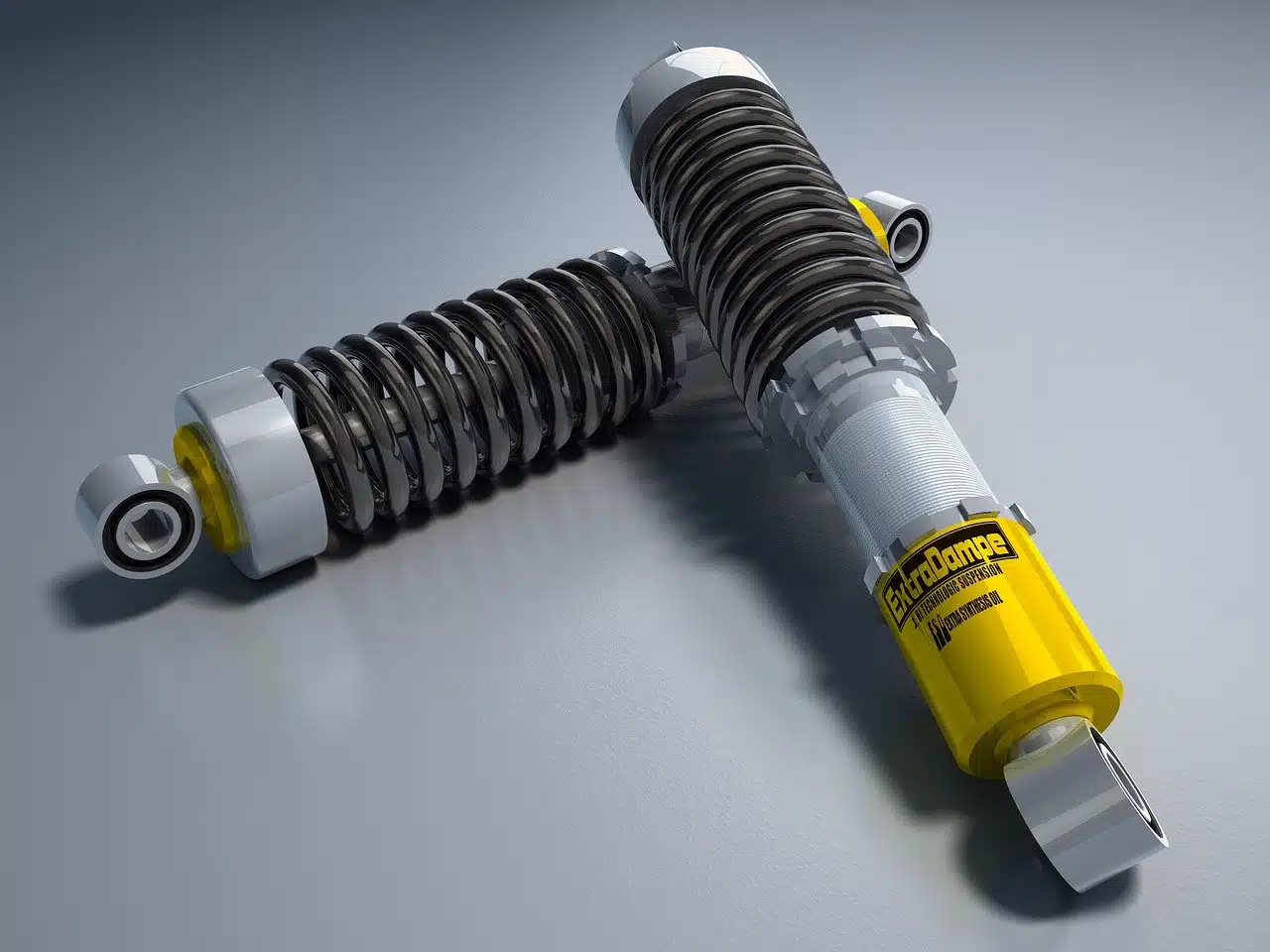
The shock absorber minimizes and compensates for the consequences of violent movements, jolts and shocks.
A shock absorber is something that dampens : that is, it causes something to become less intense, strong or energetic . In this case, shock absorber is used as an adjective (example: "This is the shock absorber component of the machine ." ).
Vehicle device
The device that allows minimizing and compensating the consequences of violent movements , shocks and shocks in mechanical machines is called a shock absorber. Unlike what was expressed in the previous paragraph, here the term is used as a noun (example: "The problem with the car was due to a fault in the shock absorber" ).
Shock absorbers are essential parts of transportation such as cars , trucks , vans and motorcycles , as they protect the rest of the vehicle's components, the driver and passengers from impacts and vibrations.
Integrated into the suspension system , the shock absorbers are located between the wheels and the chassis and contribute to the control of movements. As part of their operation, they convert kinetic energy into thermal energy .
Thanks to the shock absorbers, the vehicle has better grip on the surface , shortens the braking distance, is more stable in curves and offers greater comfort when driving since road irregularities are absorbed by these devices.
General characteristics
- Construction : Shock absorbers usually consist of a cylinder filled with a pressurized hydraulic fluid or gas. Inside the cylinder is a piston that moves up and down in response to the movements of the suspension . The piston is connected to a rod that extends outward from the shock absorber and attaches to the vehicle's chassis;
- Shock Absorption – When the vehicle goes over potholes, road irregularities or other disturbances, the shock absorbers act to absorb and dissipate the energy generated by these impacts. The piston compresses the fluid or gas inside the cylinder, which reduces the speed of movement of the rod and dissipates kinetic energy;
- Rebound and sway control – Shock absorbers also control rebound and excessive sway of the suspension. After absorbing an impact, the shock absorber is responsible for returning the suspension to its original position in a controlled and gradual manner, avoiding unwanted oscillations;
- Adjustability – Some shocks offer adjustment features that allow the driver to tailor the firmness or softness of the suspension. These models can have different configurations for sporty or more comfortable driving conditions, giving the user the ability to customize the driving experience;
- Maintenance – Shock absorbers are subject to wear over time and should be checked and replaced if necessary. It is recommended to follow the vehicle manufacturer's recommended maintenance schedule to ensure optimal shock absorber performance and driving safety.
Types of shock absorbers
- Hydraulic shock absorbers : they are conventional ones that use a hydraulic fluid to control the movement of the suspension;
- Gas shock absorbers – Also known as pressurized gas shock absorbers, they incorporate nitrogen or another gas under pressure in the cylinder along with hydraulic fluid;
- Monotube shock absorbers : They have a single-cylinder design in which the piston divides the cylinder into two sections: an upper section, filled with gas, and a lower section, filled with hydraulic fluid;
- Twin-tube shock absorbers : they are the most common and are made up of two concentric tubes: one internal and one external. The hydraulic fluid is located between the two tubes, and the piston moves up and down in the inner tube;
- Electronic shock absorbers : They have an electronic control system that adjusts the damping force in real time according to driving conditions. They use sensors to detect vehicle movements and can adapt to different scenarios, such as smooth driving on smooth roads or firmer, sportier driving.

Road irregularities generate impacts that are absorbed by the shock absorber.
